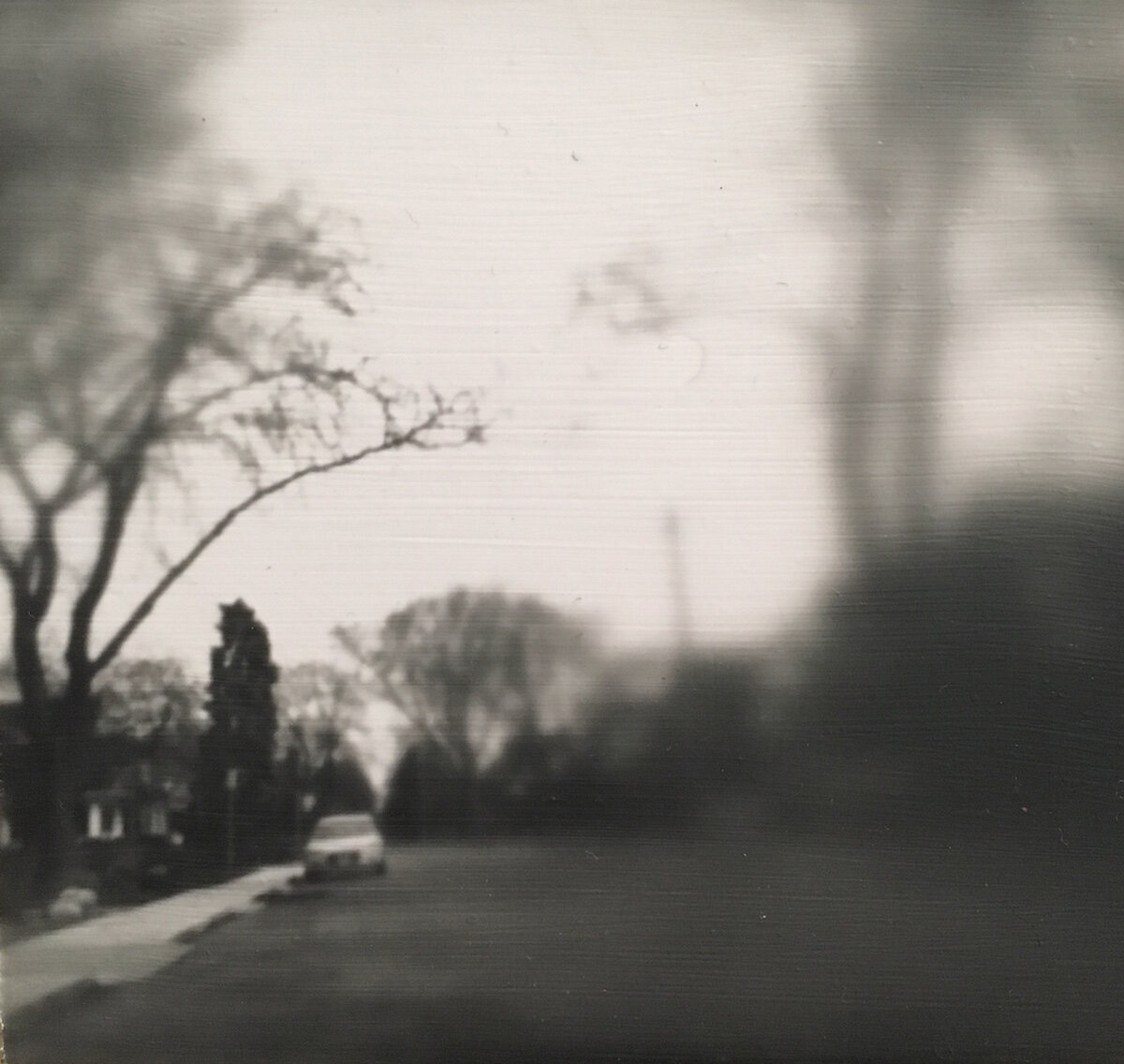About 10 years ago, I participated in a pinhole photography workshop, sparking an ongoing investigation into this simple but challenging and exciting medium.
Even though I have a BA in Computer Science, I tend to be drawn to creative pursuits that involve very little technology. I create pinhole photographs using cameras I make from materials salvaged from the recycle bin, or rescued from a thrift store. The ‘camera’ is any container (old box or cookie tin) that I can make light-proof, and that I can open to load and unload the ‘film’. My film is photographic paper that I develop in our basement bathroom.
Despite the crude equipment, pinhole photographs can be surprisingly sophisticated and rewarding. I welcome the element of surprise that results from this low-tech process. Pinhole cameras have no viewfinder or light meter. I guess at the exposure by looking at the available light, and how much squinting I need to do. My ‘shutter’ is a piece of tape. Nevertheless, I am enthralled with how this simple activity can capture more (and sometimes less) than expected. Unlike taking a photograph with a typical lens-based camera, taking a pinhole photograph requires a long exposure time (from 30 seconds to an hour or more, depending on the light level). As a result, the image captures the passage of time, not just a split-second. Like abstract passages in a painting, the inexactness of the process can lead to a more authentic and exciting image.
One of my favourite subjects is a large crowd, such as James Street North during Supercrawl. Because my cameras are small cardboard boxes or metal tins, individuals are usually not aware that I am taking a photograph. This allows me to document a scene unnoticed, without subjects becoming self-conscious or guarded. Also, due to the long exposure, the slightest movement causes distortion and blurring. As a result, individuals are unrecognizable, which adds a generic quality that I find visually interesting.
Many of my smaller pinhole photographs are contact prints, printed directly from the paper negative, and developed in the darkroom. When exposing these I can manipulate the image, manually playing with light as it hits the paper. When I was a child, my father taught me how to make prints in our basement bathroom-darkroom, showing me how to ‘burn’ and ‘dodge’ to enhance a photograph. These skills lay dormant for years, until I discovered my passion for pinhole photography.




